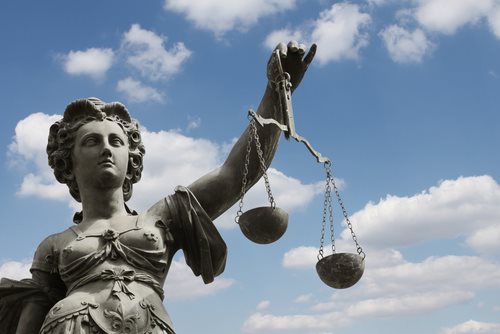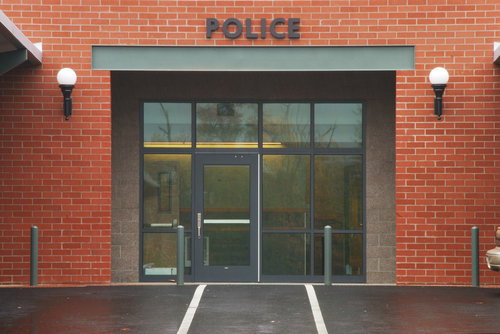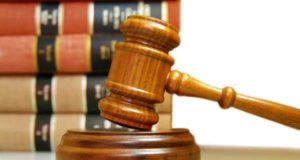
A Guide to the Justice System of the United States of America
The justice system of the United States of America is a complex and intricate process that advocates the values of justice, fairness, and equality. It uses a systematic approach to ensure the law enforcement agencies, courts, and correctional facilities work together to execute justice within the society. This guide aims to provide an overview of the features, components, and purpose of the US Justice system.
The Features of the Justice System
The US justice system comprises several features that enable it to execute its mandate. The features include:
1. Rule of Law – It is the primary principle of the US Justice system. This principle means that every individual, including the government, is accountable to the rule of law. It is the system that regulates behavior, ensuring that people conduct themselves within legal boundaries.
2. Presumption of Innocence – This is a fundamental principle of the justice system and a right for every individual. It assumes that an accused person is innocent until competent evidence confirms their culpability of an offense. The judge or jury needs to ascertain the guilt of the accused person beyond a reasonable doubt before determination.
3. Due Process – The process of administering justice follows a strict legal procedure ensuring that the rights of every person are protected before, during, and after legal proceedings. Due process protects every person’s right by guaranteeing the right to an attorney, confronting the evidence presented against them, and cross-examination.
The Components of the Justice System
The US justice system is made up of three critical components responsible for maintaining peace, order, and justice in the society. These components are:
1. Law Enforcement – This component is responsible for investigating crimes, apprehending criminals, and collecting evidence. Law enforcement officers are the first people to arrive on the scene when crimes are reported. They are responsible for enforcing state laws, and in federal institutions, it is their responsibility to enforce federal statutes.
2. Courts – The US court system comprises state courts and federal courts responsible for adjudicating legal disputes by applying the law to the facts present. Courts oversee criminal and civil cases, and in every case, the judge ensures that the rights of everyone in the courtroom are safeguarded.
3. Corrections – The Correctional system is responsible for maintaining and supervising offenders who have been convicted. Legal authorities can sentence offenders in jails, prisons, or community service, depending on the nature and severity of the crime.
Purpose of the Justice System
The US Justice system performs several crucial functions aimed at promoting a fair and just society. Some of these functions include:
1. Ensuring Law and Order – Law enforcement agencies in the US ensure that citizens obey state and federal laws. They maintain peace and order to provide an enabling environment for residents to live and conduct business.
2. Protecting Rights – It is the duty of the justice system to protect citizens against unlawful acts, including injustices perpetrated by the government in power. Everyone is entitled to fair treatment irrespective of their gender, race, religion, or any other form of discrimination.
3. Resolving Disputes – Courts adjudicate disputes in line with the law. The judicial system provides a platform for individuals or groups to settle disagreements in a fair, just, and organized manner.
4. Punishing Offenders – The justice system is responsible for punishing offenders who have been tried, found guilty, and convicted of criminal offenses. The US constitution provides punishment options such as imprisonment, community service, or fines.
Conclusion
The justice system of the United States of America is a complex system. It works to ensure that justice, fairness, and equality prevail within its jurisdictions. The justice system comprises law enforcement agencies, courts, and correctional facilities. The legal system follows a due process, and it is the responsibility of each component to maintain law and order, protect citizens’ rights, resolve disputes, and punish offenders. Understanding how the US justice system operates is essential for upholding the principles of justice and promoting a society that is fair and just.
The Justice System of the United States of America
The Justice System of the United States of America is comprised of 3 Federal Agencies responsible for varying responsibilities concerning both the upholding of justice, as well as its review, analysis, and application legislation:
The Executive Justice System of the United States of America
The Executive Justice System of the United States of America is responsible for the regulation and enforcement of operational legislation existing within the United States of America; this includes the Office of the President of the United States, the Department of Treasury, the Department of Energy, and the Department of Agriculture.
The Judiciary Justice System of the United States of America
The Judicial Justice System of the United States of America is responsible for the administration, application, and interpretation of operational legislation existing within the United States of America; this includes the Supreme Court of the United States, Federal Appeals Courts, and Federal District Courts.
The Legislative Justice System of the United States of America
Legislative Federal Agencies are responsible for the development and formulation of operational legislation existing within the United States of America; this includes Congress – the primary, bicameral legislative body comprised of the House of Representatives and the Senate responsible for the creation of laws both protecting and preserving justice within the United States of America.
What is the United States Department of Justice?
The Department of Justice is a federal agency within the Executive Branch of the government responsible for the supervision of all sub divisions, agencies, and department existing under the United States Department of Justice; amongst the most primary objectives of the Department of Justice include the regulation and administration of legal activity, statutory legislation, and lawful behavior with regard Federal government:
The USDOJ not only serves to ensure that the Federal government acts in accordance with the law, which includes all branches of the Federal Government
In addition, the Department of Justice undertakes all manners of criminal activity existing on a national level, which includes crimes occurring on both foreign and interstate levels; there are federal agencies and departments are among the 59 total that exist under the jurisdiction of the United States Department of Justice
The Office of the Attorney General of the United States is a Federal position – currently undertaken by Eric Holder, which is responsible for the legal advocacy and representation on behalf of the collective citizenship of the United States of America; the Attorney General of the United States is considered to be amongst the primary administrators responsible for the preservation and protection of statutory legislation
The Justice System: Supplemental Information and Resources
Administrative Law is the legal field associated with events and circumstances in which the Federal Government of the United States engages its citizens, including the administration of government programs, the administration and operation of government agencies, and the establishment of a legal, regulatory federal standard. The main office of the United States Department of Justice can be contacted through the following means:
The United States Department of Justice
950 Pennsylvania Avenue, NW
Washington, D.C.
20530
(202) 307-9100















